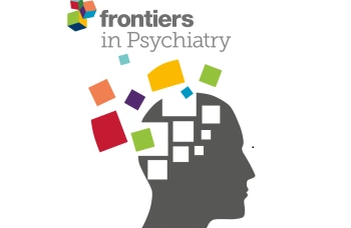Nonsuicidal Self-Injury and Suicide: The Role of Life Events in Clinical and Non-Clinical Populations of Adolescents
 Lili Olga Horváth, Assistant Professor and Judit Balázs, Head of Department and Research Group, and their co-authors studied the relationship between nonsuicidal self-injury and suicidal behavior in their article in the Frontiers Psychiatry journal.
Lili Olga Horváth, Assistant Professor and Judit Balázs, Head of Department and Research Group, and their co-authors studied the relationship between nonsuicidal self-injury and suicidal behavior in their article in the Frontiers Psychiatry journal.Background: Nonsuicidal self-injury (NSSI) is highly prevalent in clinical and non-clinical populations of adolescents. Several studies have supported both the distinction and the strong association between NSSI and suicidal behavior. Although there is a great deal of data on the role of life events in both suicidal behavior and NSSI, few studies have assessed the role of life events in the NSSI–suicidal behavior relationship. Our aims were to explore the relationship between NSSI and suicidal behavior, and the possible moderating role of stressful life events in a clinical and non-clinical adolescent population.
Method: A clinical (n = 202) and a nonclinical (n = 161) population of adolescents, aged 13–18 years were assessed. The Mini International Neuropsychiatric Interview Kid, Deliberate Self-Harm Inventory and the Life Events List were used. Group differences related to suicidal behavior, NSSI, and life events were tested with Wilcoxon tests. Two- and three-way interactions were tested with negative binomial regression models including zero-inflation parameter.
Results: The prevalence of suicidal behavior (W = 7,306, p < .001), NSSI (W = 9,652, p < .001) and life events (W = 10,410 p < .001) were significantly higher in the clinical than in the non-clinical group. Between number of life events and NSSI, a moderate effect size (.38, 95%CI [.28,.46]) was found. The main effect of NSSI (χ2(1) = 109.65, p < .001) and group membership (χ2(1) = 39.13, p < .001) predicted suicidal behavior; the main effect of quantity of life events did not explain suicidal behavior. The interaction between NSSI and number of life events (χ2(1) = 10.49, p < .01) was associated with suicidal behavior. Among interpersonal, non-interpersonal events and adverse childhood circumstances, only interpersonal events were associated with both suicidal behavior (χ2(1) = 6.08, p < .05) and had a moderating effect (χ2(1) = 8.59, p < .01) on the NSSI–suicidal behavior relationship. Patterns of the effects of life events on the NSSI–suicidal behavior relationship did not differ in the two groups.
Conclusion: Our results confirm the importance of prevention and intervention of NSSI, considering its high prevalence and frequent co-occurrence with suicidal behavior in both clinical and non-clinical adolescent populations. Moreover, to support NSSI and suicide prevention, we would like to highlight the importance of stressful life events, especially those associated with interpersonal conflicts, require special attention.
The full article is available here.

Megjegyzések0
Nincs jogosultsága a megtekintéshez, illetve megjegyzés írásához.Kérjük, jelentkezzen be.
Javasolt cikkek

